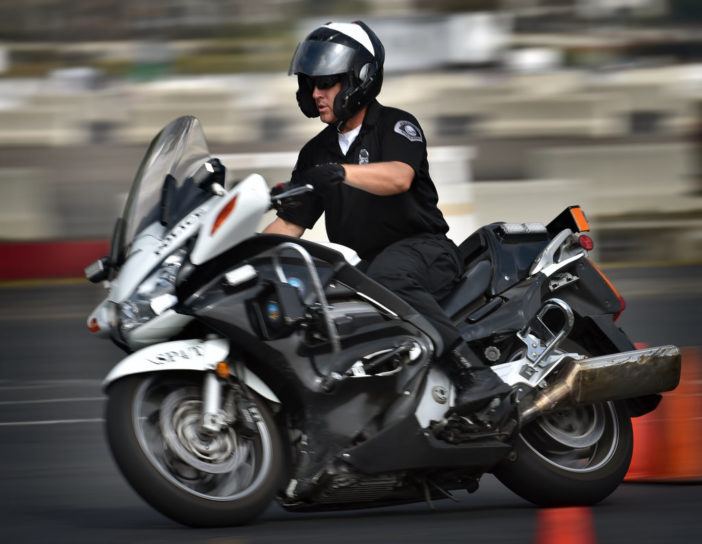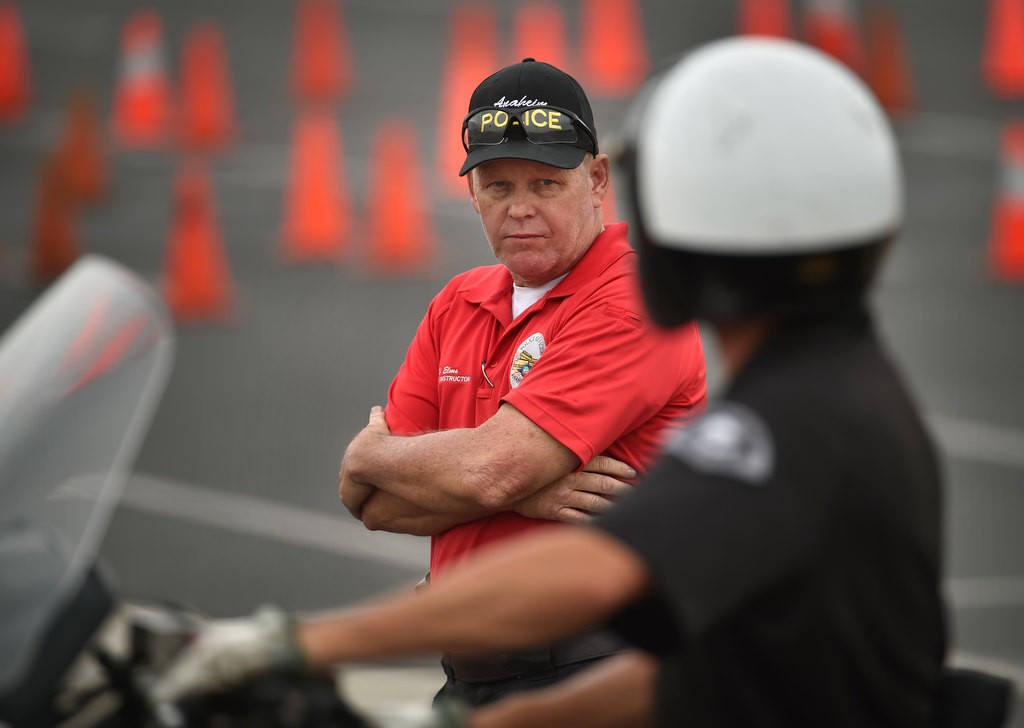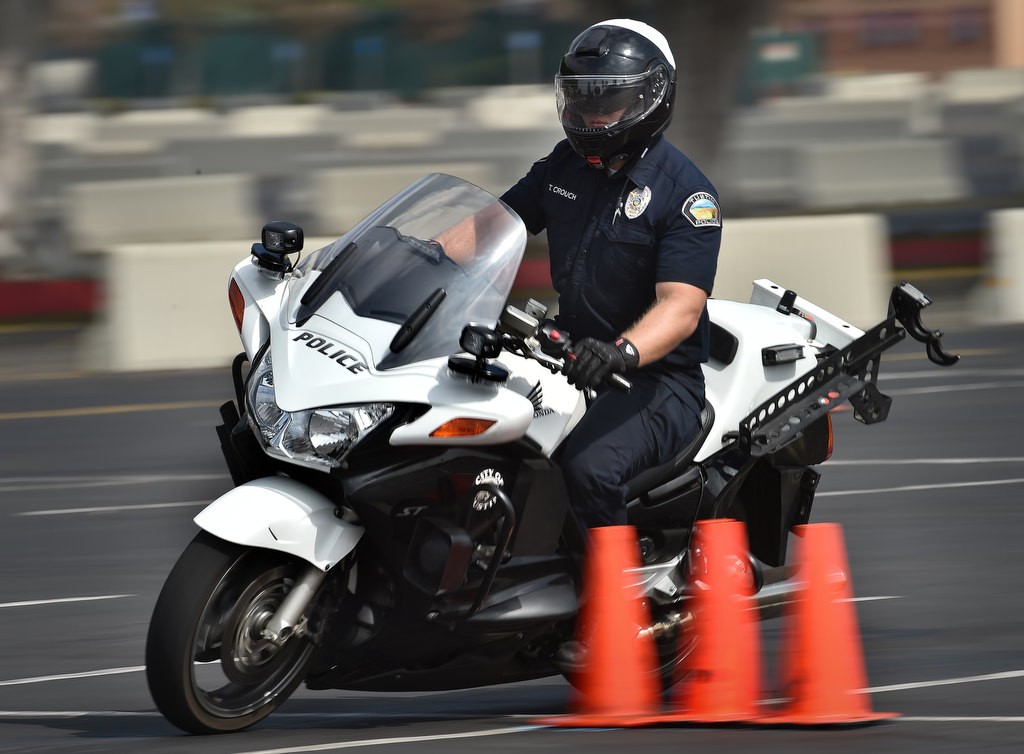In a section of the parking lot at Angel Stadium of Anaheim, three officers and one sergeant rode through their next practice pattern:
The 30-Cone Weave.
Each motorcycle rider needed to enter the cone pattern at 30 mph and maintain a speed of between 29 and 31 mph while weaving through a series of cones.
The exercise simulated for the motor officers-in-training what they would have to do to avoid obstacles on the street while on duty, said Anaheim Police Department Motor School instructor Officer Doug Elms.
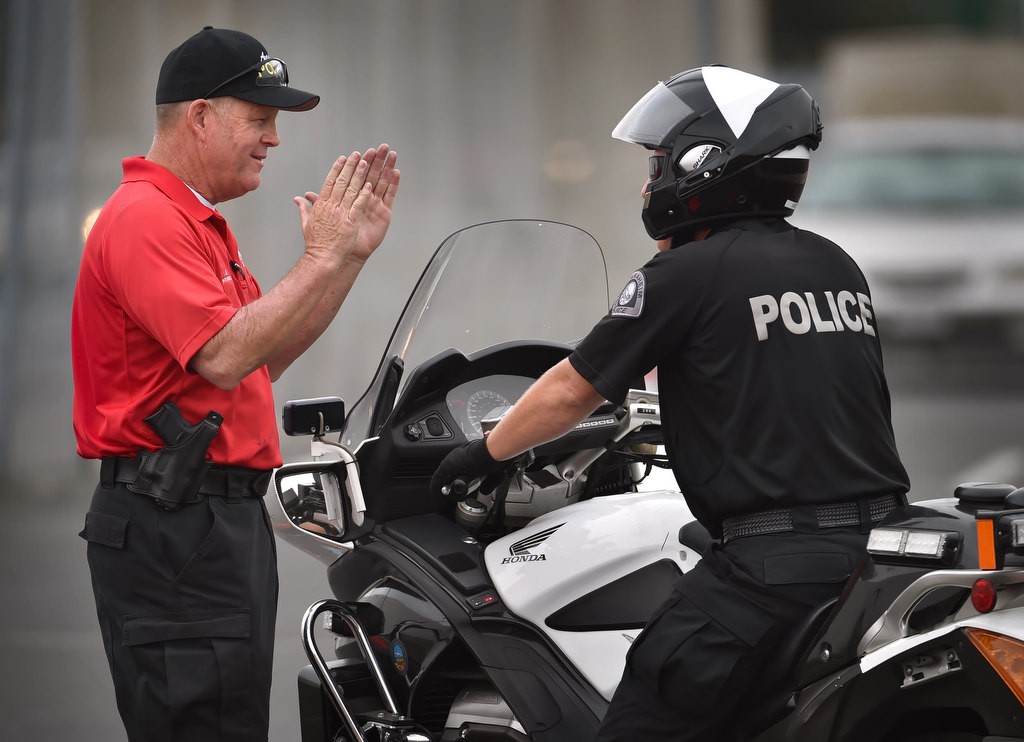
Anaheim PD Motor Instructor Doug Elms, left, gives advice to Anaheim Sgt. Rick Boyer on how to run through the Incline Pullout course at Anaheim PD’s Motor School.
Photo by Steven Georges/Behind the Badge OC
The recent practice session was part of the APD Motor School’s two-week training and testing program.
The agency recently was re-certified as a Motor School (many of the area motor officers attend the San Bernardino County Sheriff’s Motor School).
Since July, the APD has been offering its school to local police agencies. So far it has held two sessions.
While it will not be holding sessions as regularly as the San Bernardino school offers (sessions only will be offered when APD motor officers need to be trained), it still gives agencies a local alternative for Motor School.
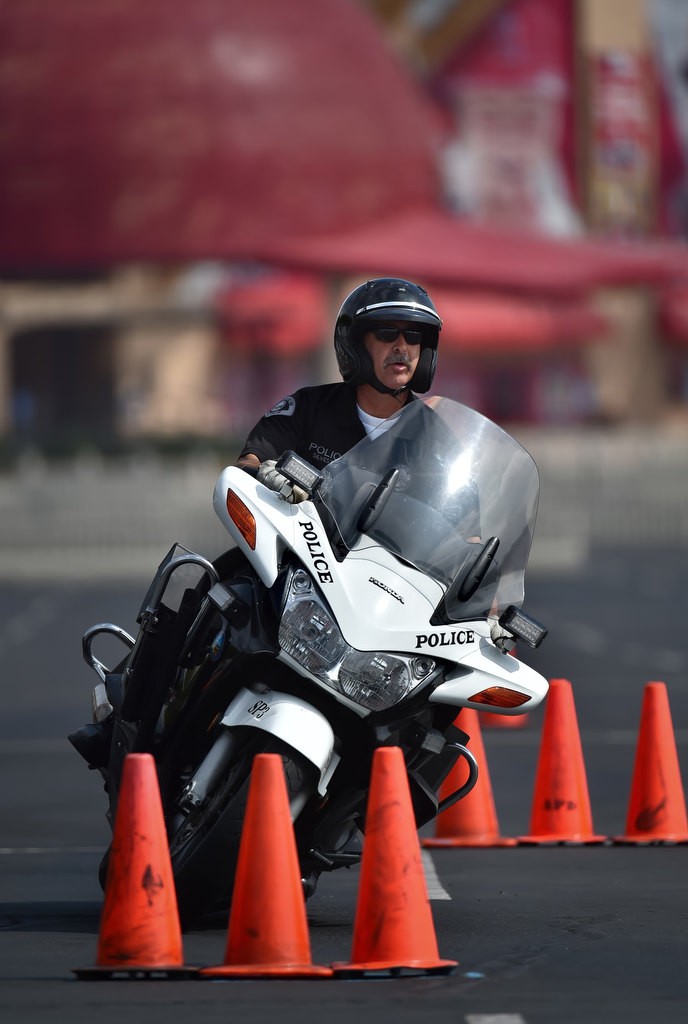
Officer Tony Silvestri makes his way through the 30-Cone Weave at Anaheim PD’s Motor School in the parking lot of Angels Stadium.
Photo by Steven Georges/Behind the Badge OC
“Being a police officer on a motorcycle is multitasking to the extreme,” says instructor Officer Shane Spielman. “Each appendage is doing something.”
Because of the mentally and physically taxing nature of riding a motorcycle on duty, APD places a strong focus on training. So the two-week Motor School training and testing is actually preceded by a pre-academy for two weeks where the very basics of riding are taught.
Spielman says it’s actually easier to train newbies who never have touched a motorcycle before than more experienced riders.
“Without proper training, they develop bad habits,” he says.
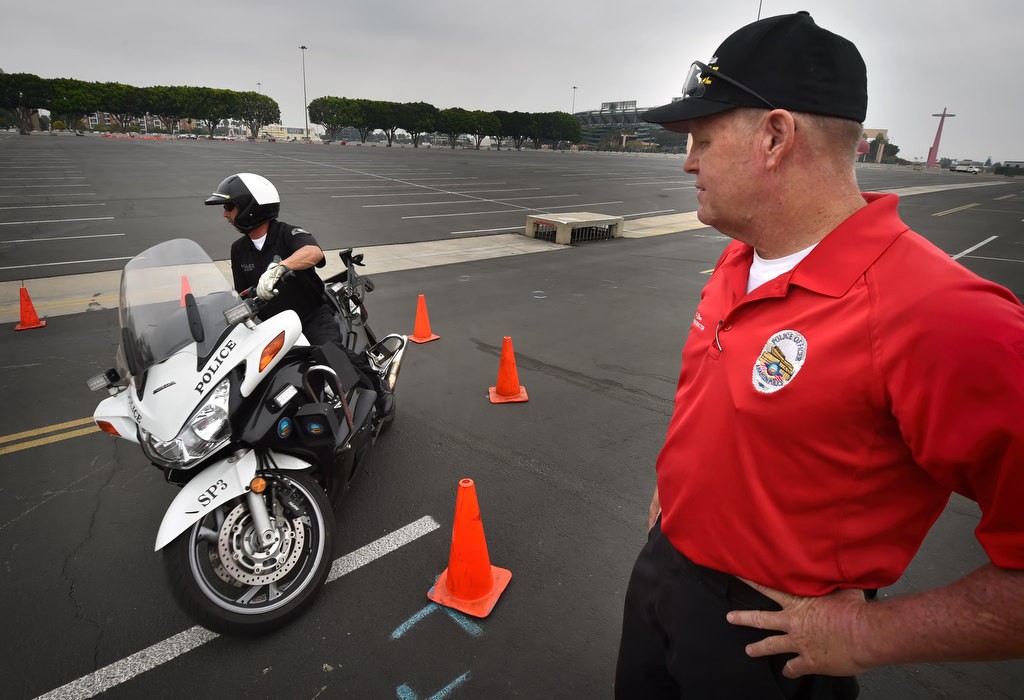
Anaheim PD Motor Instructor Doug Elms watches over Anaheim Officer Tony Silvestri as he runs through the Incline figure 8 course.
Photo by Steven Georges/Behind the Badge OC
Plus, all forms of civilian motorcycle riding are completely different from what an on-duty motor officer will have to contend with.
“Motorcycles are inherently more dangerous than riding in a car,” says Spielman. “Then you couple that with being a cop is just dangerous in general … so it’s twice the risk.”
The training doesn’t end with Motor School, either.
Those who pass then go through a two-week street enforcement training with a motor instructor riding along to evaluate the new motor officer. The reason, Spielman says, is “to evaluate how safe and professional they’re out in the field doing the task a motor officer would do.”
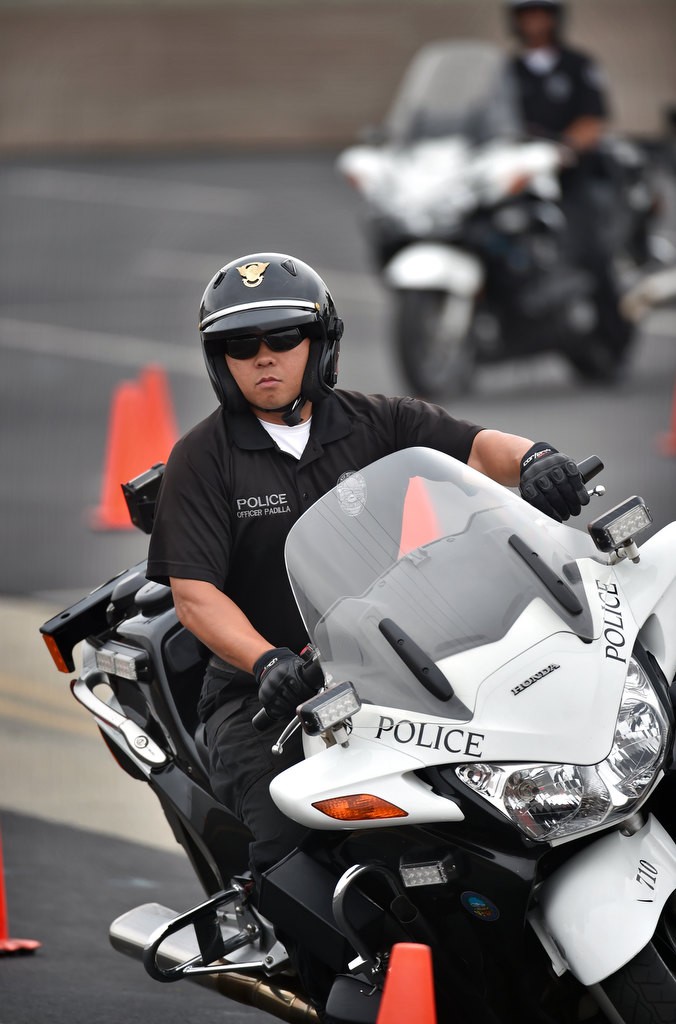
Anaheim PD Motor student Officer Mike Padilla runs through a course.
Photo by Steven Georges/Behind the Badge OC
Those who don’t pass Motor School are welcome to try again.
Spielman says some just need more time training than others.
“A lot of the things we do, it’s the opposite of normal reaction,” says Spielman, adding that a good example of that is that riders should never look down – they must look where they want to go. The body dictates where the bike will go.
“It’s training your brain to not do what you actually want to do,” Spielman says.
Motor School trainee APD Officer Tony Silvestri wanted to challenge himself after 25 years of working in law enforcement. So he signed up for Motor School.
“It’s one of the hardest things I’ve ever done,” Silvestri says.
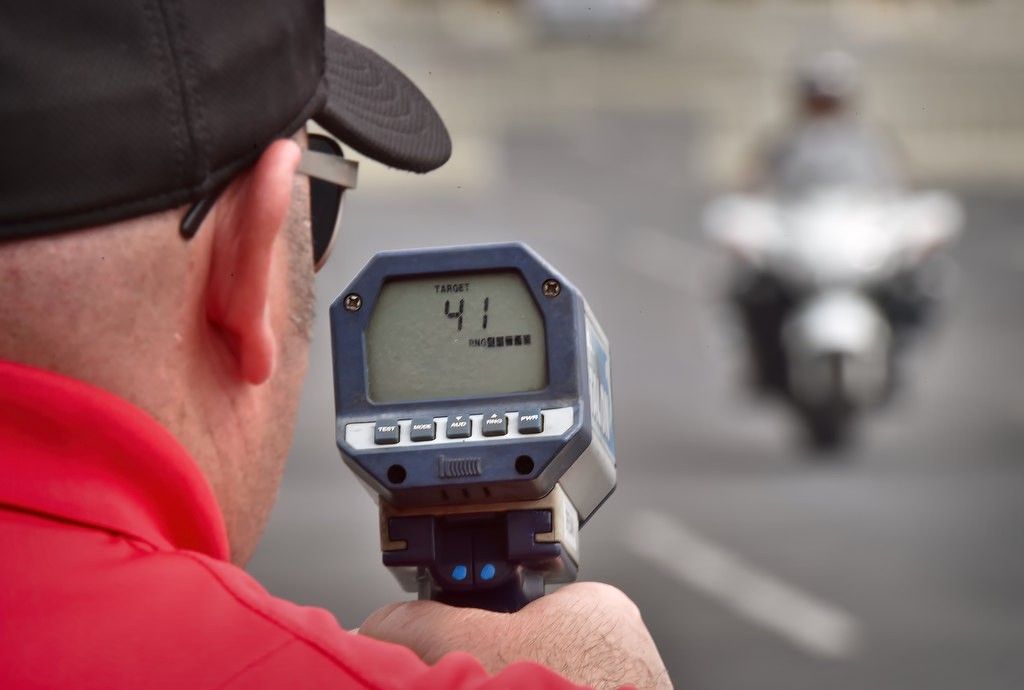
Anaheim PD Motor Instructor Shane Spielman makes sure motor students reach at least 40 mph before a sudden deceleration as they maneuver through cones on the “40 Decel” course.
Photo by Steven Georges/Behind the Badge OC

Anaheim PD Motor School students (from left) Tustin PD Officer Tim Crouch, Anaheim Sgt. Rick Boyer, Officer Mike Padilla and Officer Tony Silvestri get ready to run through the 40 Decel course (speeding up to 40 mph before a sudden deceleration where you make your way through the cones) at the Anaheim PD’s motor school in the parking lot of Angels Stadium in Anaheim.
Photo by Steven Georges/Behind the Badge OC

Anaheim PD Motor Instructor Doug Elms gives advice to Anaheim Sgt. Rick Boyer on how to run through the Incline Pullout course.
Photo by Steven Georges/Behind the Badge OC
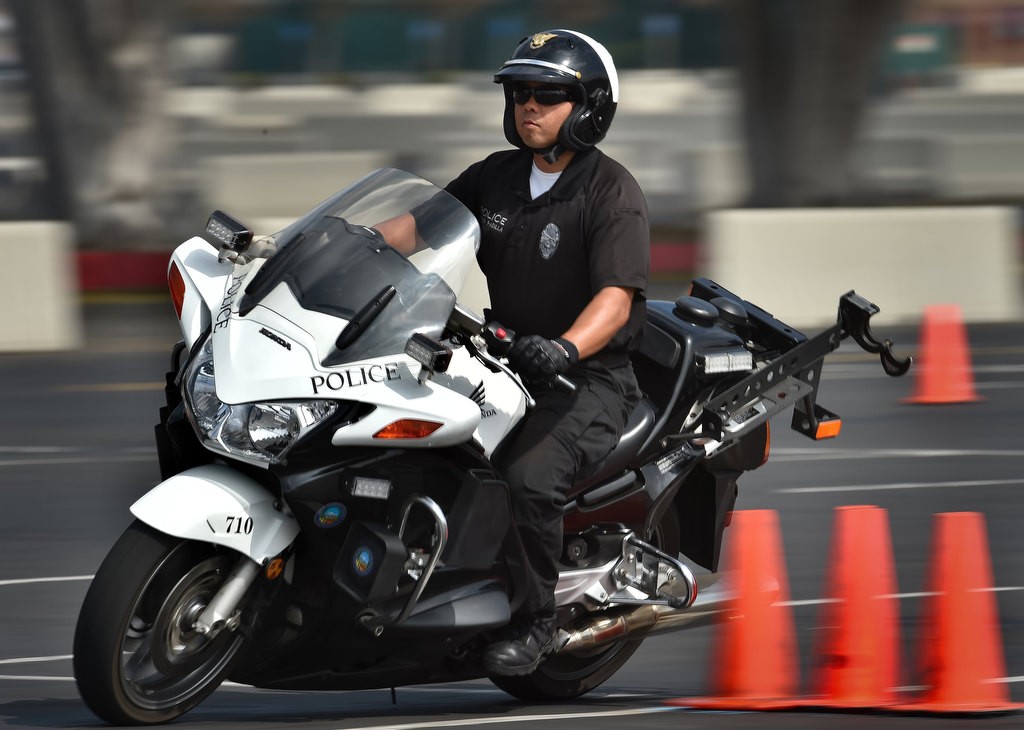
Anaheim PD Officer Mike Padilla makes his way through the 30-Cone Weave.
Photo by Steven Georges/Behind the Badge OC
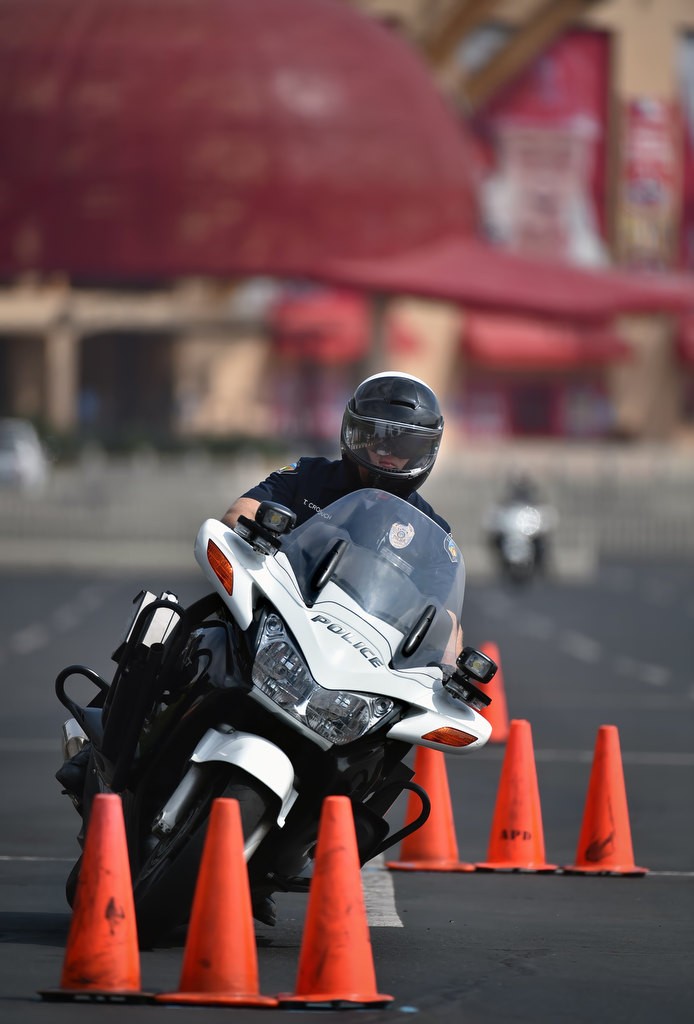
With Angels Stadium behind him, Tustin PD Officer Tim Crouch makes his way through the 30-Cone Weave.
Photo by Steven Georges/Behind the Badge OC
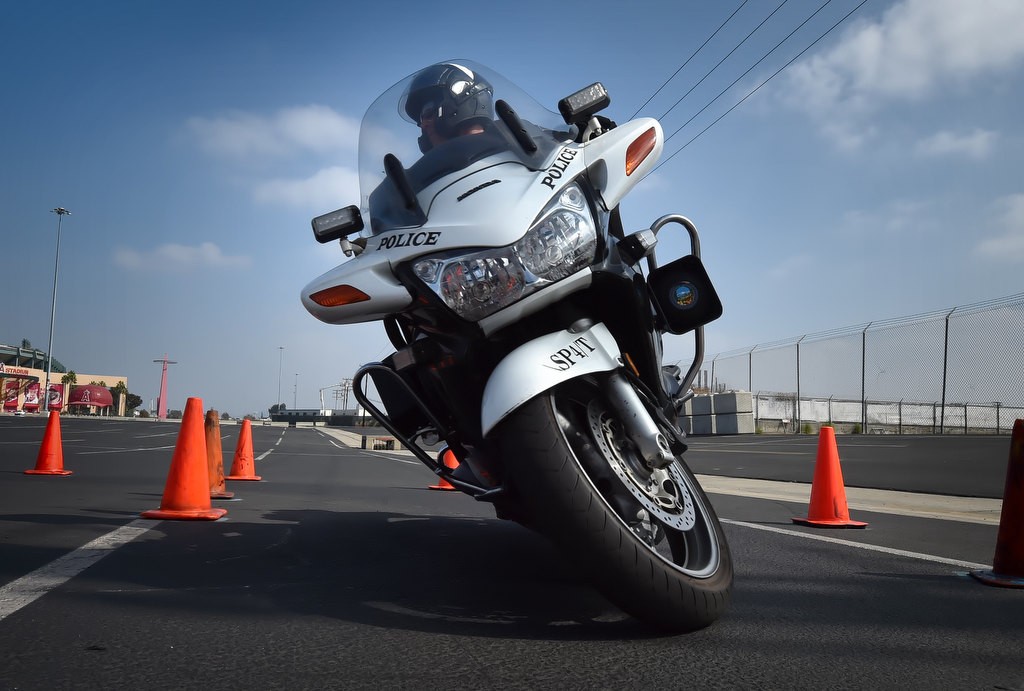
Anaheim PD Sgt. Rick Boyer runs through PP #3, often referred to as “The Eliminator” course, during Anaheim PD’s Motor School.
Photo by Steven Georges/Behind the Badge OC
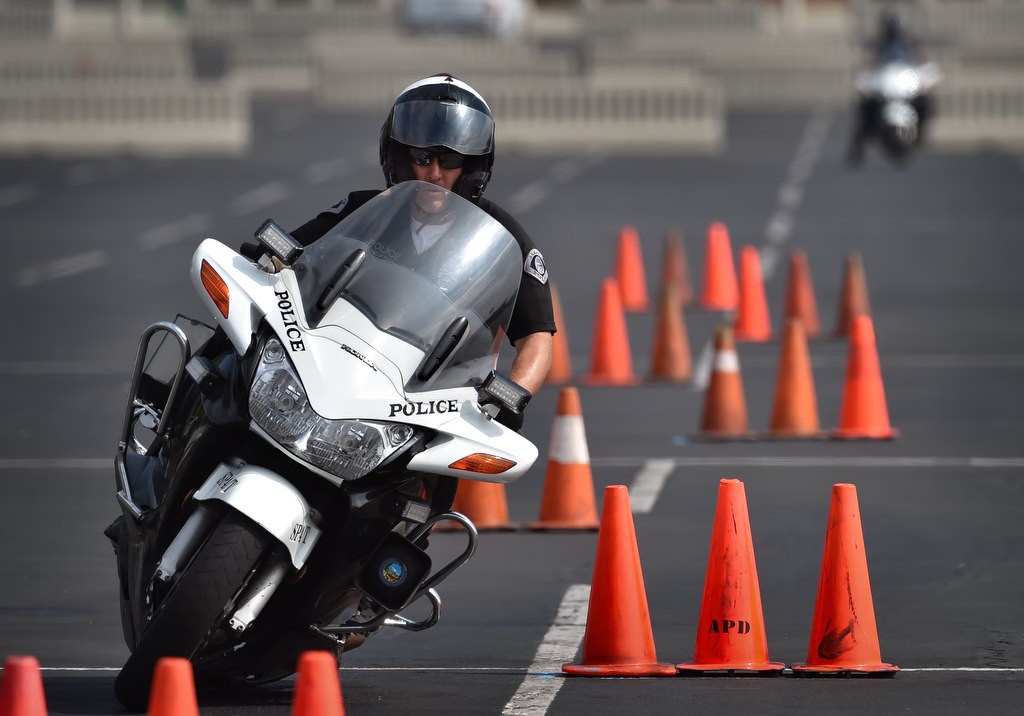
Anaheim PD Sgt. Rick Boyer cuts back and forth through the 30-Cone Weave.
Photo by Steven Georges/Behind the Badge OC
 Behind the Badge
Behind the Badge
